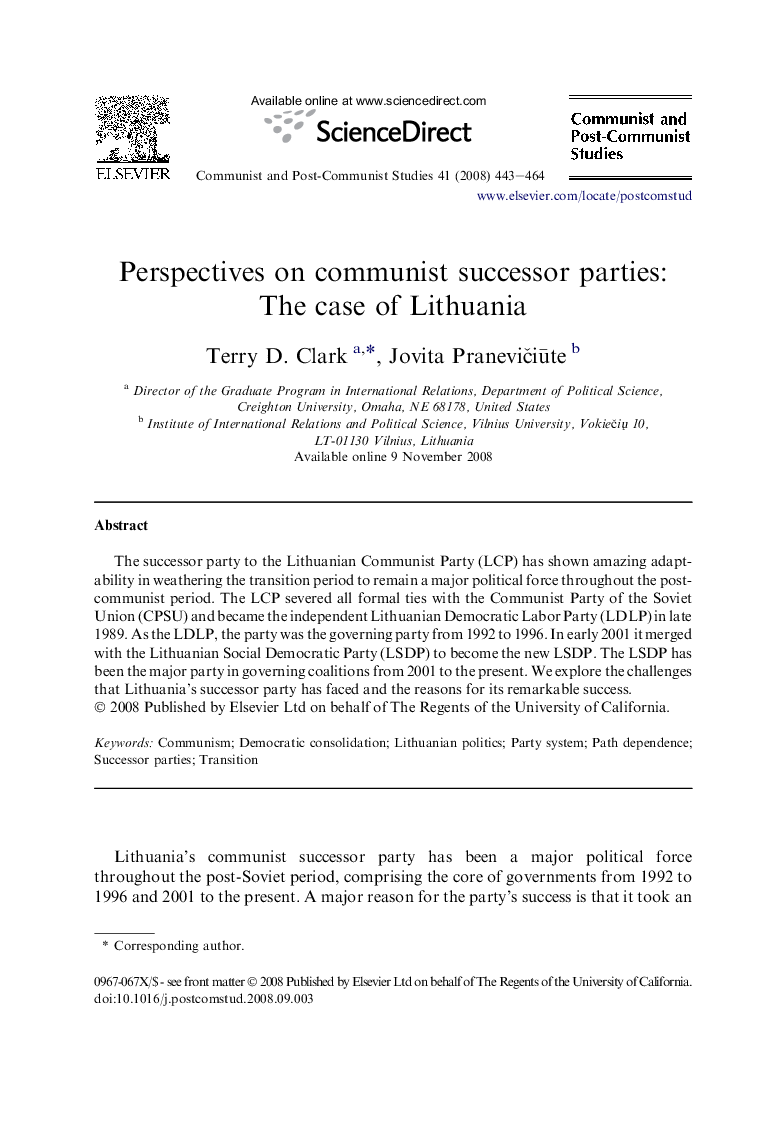| Article ID | Journal | Published Year | Pages | File Type |
|---|---|---|---|---|
| 1046597 | Communist and Post-Communist Studies | 2008 | 22 Pages |
Abstract
The successor party to the Lithuanian Communist Party (LCP) has shown amazing adaptability in weathering the transition period to remain a major political force throughout the post-communist period. The LCP severed all formal ties with the Communist Party of the Soviet Union (CPSU) and became the independent Lithuanian Democratic Labor Party (LDLP) in late 1989. As the LDLP, the party was the governing party from 1992 to 1996. In early 2001 it merged with the Lithuanian Social Democratic Party (LSDP) to become the new LSDP. The LSDP has been the major party in governing coalitions from 2001 to the present. We explore the challenges that Lithuania's successor party has faced and the reasons for its remarkable success.
Related Topics
Social Sciences and Humanities
Social Sciences
Development
Authors
Terry D. Clark, Jovita Pranevičiūte,
